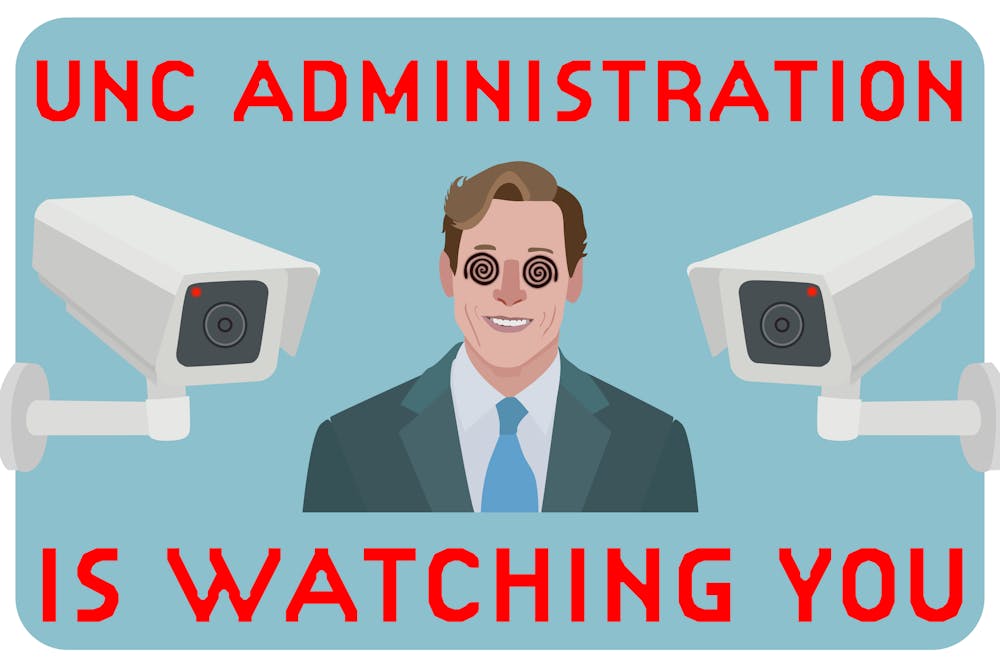Welcome back to campus, students!
It has been our pleasure to watch you over the past few weeks. It warms our hearts to see friends reconnect, new students learn the layout of campus and just about everything else in between.
We are the 10-foot-high cameras positioned all over Polk Place. Last semester, after campus leadership instructed the police to attack and arrest its own students, they also made sure to install us all around the Quad, and it seems we’re here to stay!
Look up the next time you’re passing Dey Hall — you just might see us.
With this heightened surveillance, we have found so many more ways to connect with our students. We love the increased access we now have to your everyday lives. Just imagine the next protest on campus — we’ll be right there with you guys, taking bird's-eye view pictures and documenting your faces. Who knows what we could do with all that information?
If you think about it, we’re really just the cherry on top in a long history of this school monitoring its students' activities.
In 2016, UNC signed a one-year contract with Social Sentinel, now part of Navigate 360, a company that offers technology capable of scanning students' social media accounts for the purpose of identifying students who pose a risk to themselves or others.
Instead of just using Social Sentinel to prevent threats to campus safety, campus administration ultimately began using it as a way to track and monitor students during protests. In 2017, following an email from an FBI agent to the chief of UNC Police, UNC officials utilized that very software to collect information on students protesting against Silent Sam, a since-toppled statue of a Confederate soldier.
The ability to identify entire groups of people and associate them with an event or location is such a beautiful byproduct of technology like that from Social Sentinel. While UNC’s contract with Social Sentinel ended in 2019, we really have no idea what other forms of surveillance the school employs on its students.



